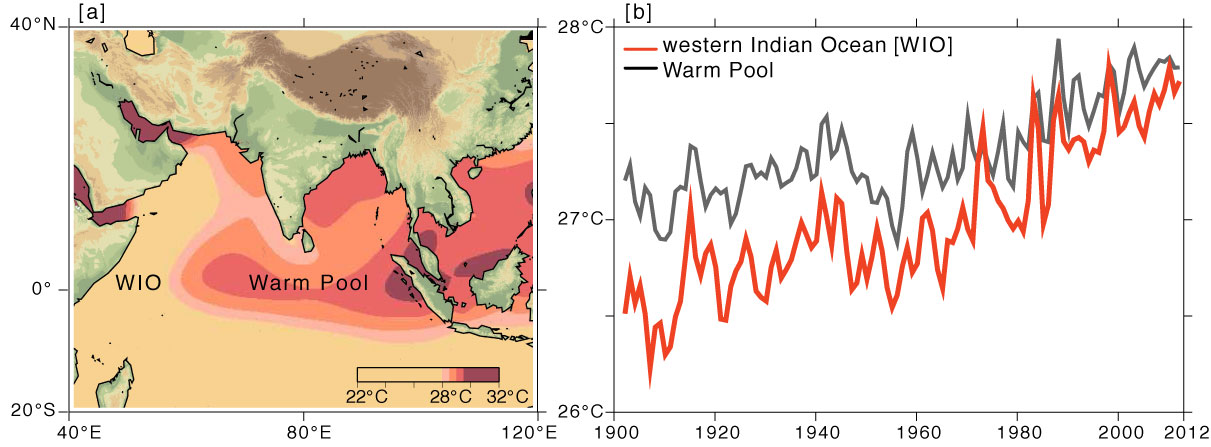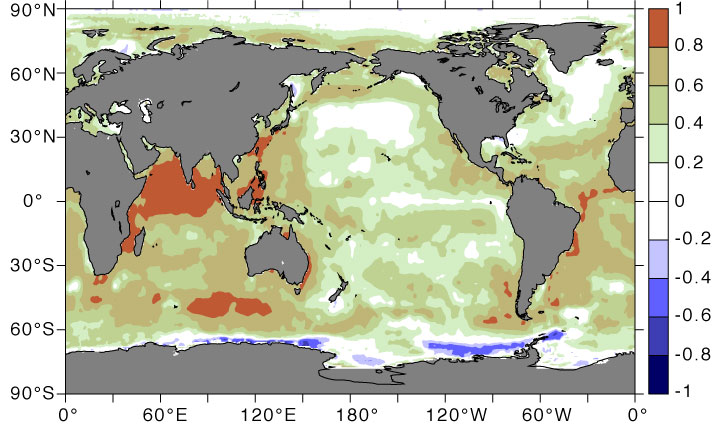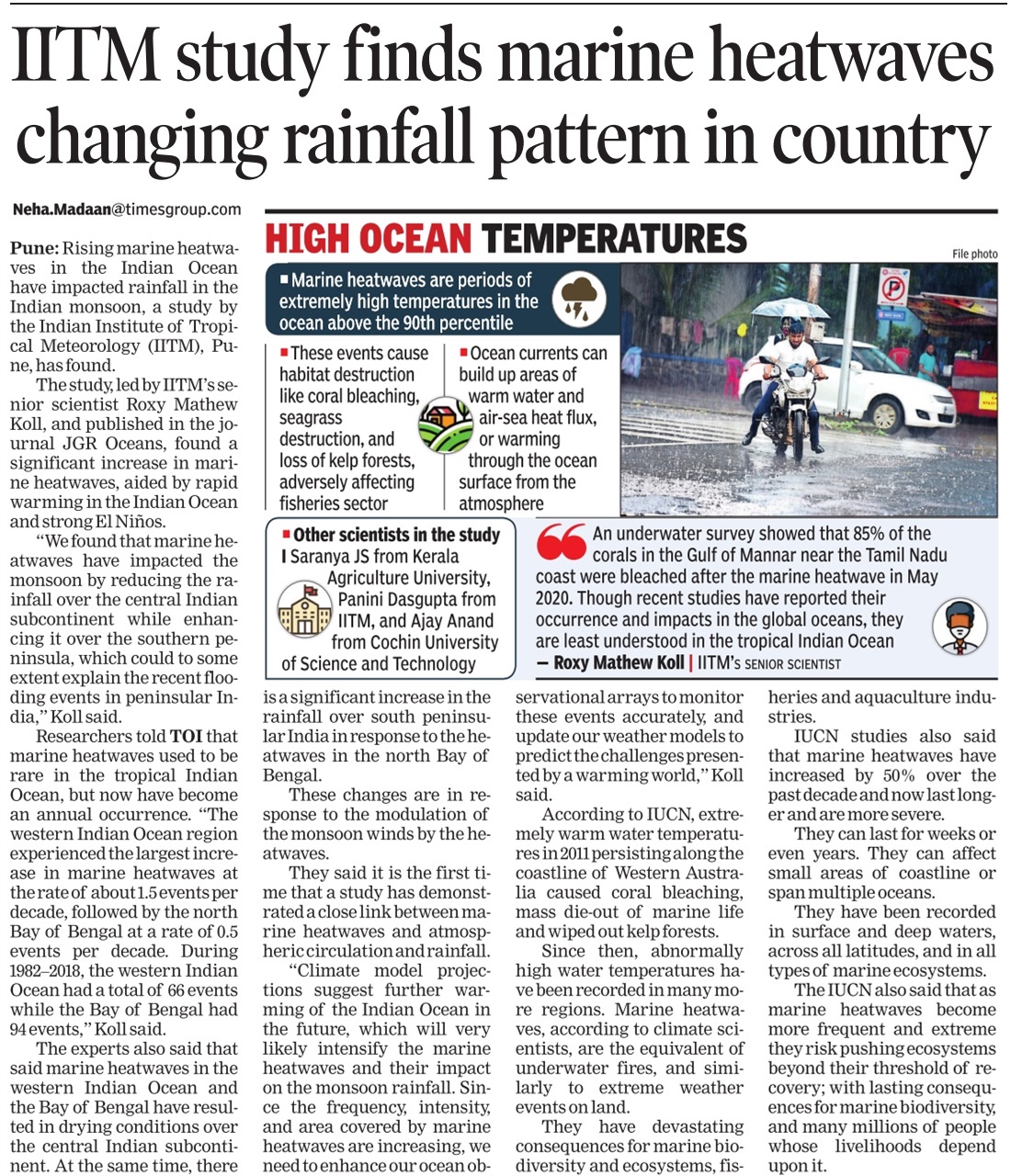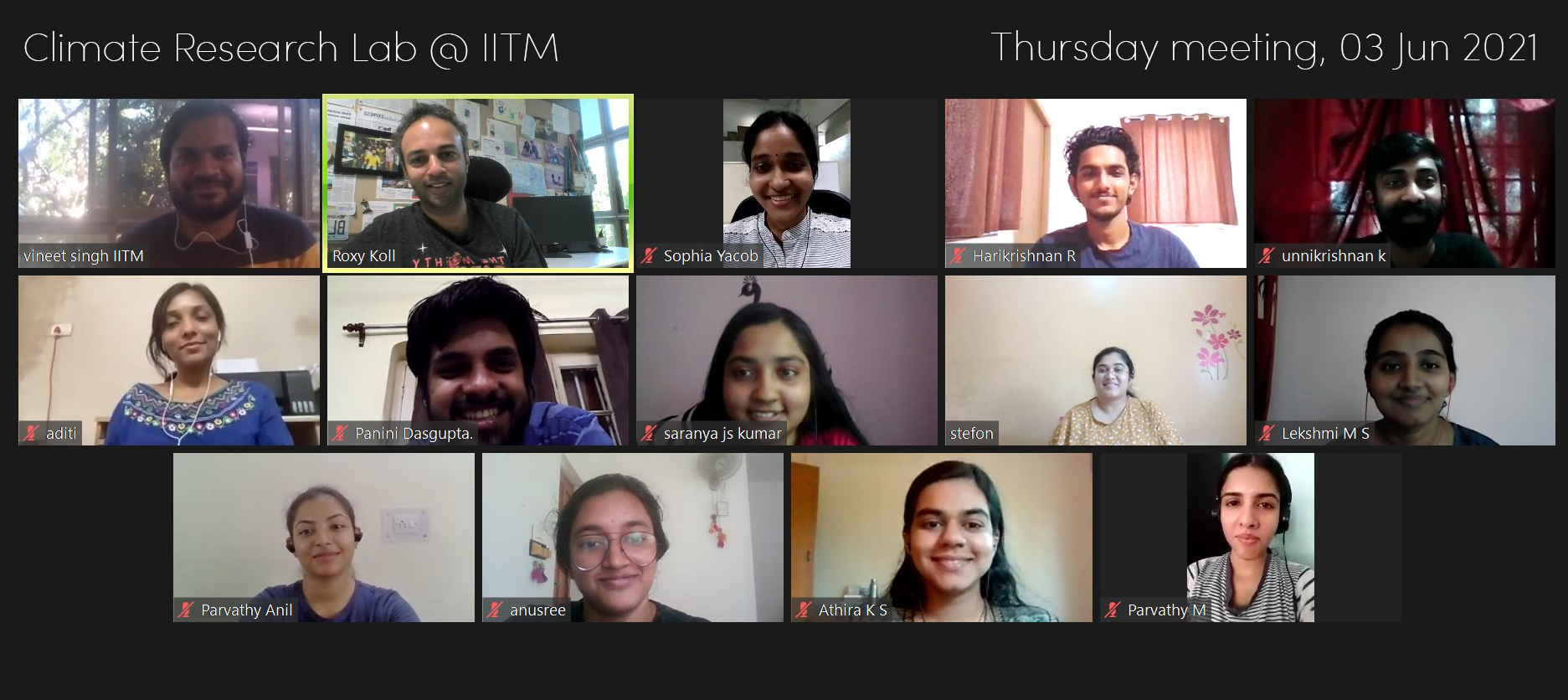Being the warmest among the major oceans, the Indian Ocean plays a critical role in regulating the mean climate and variability of the Asian monsoon, as well as the dynamics over the tropics. During summer, the central-east Indian Ocean is characterized by a warm pool with sea surface temperatures (SST) greater than 28.0°C, making it highly conducive for enhanced convection. Studies on SST trends during the past half-century have pointed out substantial warming over this warm pool, though the reasons behind this monotonic warming have remained ambiguous.

(a) The western Indian Ocean (WIO) is generally cool, while the rest of the Indian Ocean is a warm pool region with sea surface temperature (SST) greater than 28.0°C (shades of red) during summer. (b) During the past century, the WIO has warmed up tremendously, reaching up to the SST values of the warm pool and weakening the zonal SST gradient. This warming turns out to be the major contributor to the global ocean surface warming.
The warming over the western Indian Ocean
However, our analysis of SSTs during 1901-2012 reveals a more gravid picture of the Indian Ocean warming. The focus shifts to the relatively cool western Indian Ocean. We find that the western tropical Indian Ocean has been warming for more than a century, at a rate faster than any other region of the tropical oceans, and has attained the warm pool SST values of 28.0°C. While the warm pool went through a warming of 0.7°C, the western basin experienced anomalous increase of 1.2°C in summer SSTs. The warming of the generally cool western Indian Ocean against the warm pool region weakens the zonal SST gradients, and has the potential to change the Asian monsoon circulation and rainfall, as well as to alter the marine food webs in this biologically productive region.
El Niño appears as an event through which the Pacific Ocean throws out its heat, which partially gets accumulated in the Indian Ocean via a modified Walker circulation. Though the frequency of El Niño events has increased in the recent decades, a strong warm event has not been recorded since 1997-98 and correspondingly, both the Pacific and Indian Ocean SST anomalies show a slight dampening in the recent years. This could add up as a reason for the recent hiatus in the global surface warming.
The cause: Asymmetry in ENSO forcing, and increase in the frequency of El Niño events
The current study using observations and climate model simulations gives compelling evidence that the long-term warming trend over the Indian Ocean during summer is highly dependent on the asymmetry in the El Niño Southern Oscillation (ENSO) teleconnection—i.e. the El Niño events induce anomalous warming over the western Indian Ocean while the La Niña events fail to do the inverse. A second, prominent reason is that the frequency of El Niño events has increased during recent decades.
Largest contributor to global ocean surface warming
The Indian Ocean warming turns out to be the largest contributor in phase with the overall trend in the global mean SST. Post-1950, a few warm events over the Indian Ocean have attained the threshold value for El Niño (SST anomalies greater than 0.77°C). This places these warm events almost on par with the El Niños in magnitude. Considering the long-term persistence of these events, the Indian Ocean warming scenario and related climate dynamics are factors to be vigilant of, while assessing long-term climate change and variability.

Observed correlation between annual values of global mean SST and the SST at each grid, during 1901-2012. The SST over the Indian Ocean appears to be the major contributor, in-phase with the global ocean surface warming. Color shading denotes correlation coefficients significant at the 99% confidence level.
Media Highlights: The study received media attention, on international radio, and newspapers covering it as front page headlines. See our media section for details.The study is part of an Indo-French collaboration, carried out under the National Monsoon Mission program.
References:




